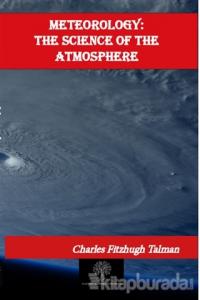MeteorologyThe Science of the Atmosphere

Meteorology is the science of the atmosphere and its phenomena, including weather.
Nowadays, when we speak of a “meteor,” we generally mean a shooting star; but formerly this term was applied (and it still often is in technical literature) to a great variety of phenomena and appearances in the atmosphere, including clouds, rain, snow, rainbows, and so forth. That is how the science of the atmosphere came to have its present name.
Meteorology is not a branch of astronomy. These two sciences are as different from each other as zoölogy is from botany. They are both founded on physics, and they “overlap” each other to some extent, just as every science does certain others; but if you want information about the atmosphere, weather and climate, an astronomical observatory is not the place to seek it; while if you wish to make inquiries about comets, sun spots, eclipses, standard time, or the date on which Easter fell in the year 1666, do not apply to the Weather Bureau.
In the city of Washington the Government maintains an astronomical and timekeeping institution known as the Naval Observatory, and it maintains in the same city the central office of the United States Weather Bureau. The two establishments are a mile apart in space and nearly a whole library apart in the subjects with which they are concerned. The fact that their functions are persistently confounded by the public indicates the necessity of writing this preface to a popular book on meteorology.
- Açıklama
Meteorology is the science of the atmosphere and its phenomena, including weather.
Nowadays, when we speak of a “meteor,” we generally mean a shooting star; but formerly this term was applied (and it still often is in technical literature) to a great variety of phenomena and appearances in the atmosphere, including clouds, rain, snow, rainbows, and so forth. That is how the science of the atmosphere came to have its present name.
Meteorology is not a branch of astronomy. These two sciences are as different from each other as zoölogy is from botany. They are both founded on physics, and they “overlap” each other to some extent, just as every science does certain others; but if you want information about the atmosphere, weather and climate, an astronomical observatory is not the place to seek it; while if you wish to make inquiries about comets, sun spots, eclipses, standard time, or the date on which Easter fell in the year 1666, do not apply to the Weather Bureau.
In the city of Washington the Government maintains an astronomical and timekeeping institution known as the Naval Observatory, and it maintains in the same city the central office of the United States Weather Bureau. The two establishments are a mile apart in space and nearly a whole library apart in the subjects with which they are concerned. The fact that their functions are persistently confounded by the public indicates the necessity of writing this preface to a popular book on meteorology.
- Yorumlar
- Yorum yazBu kitaba henüz kimse yorum yapmamıştır.


